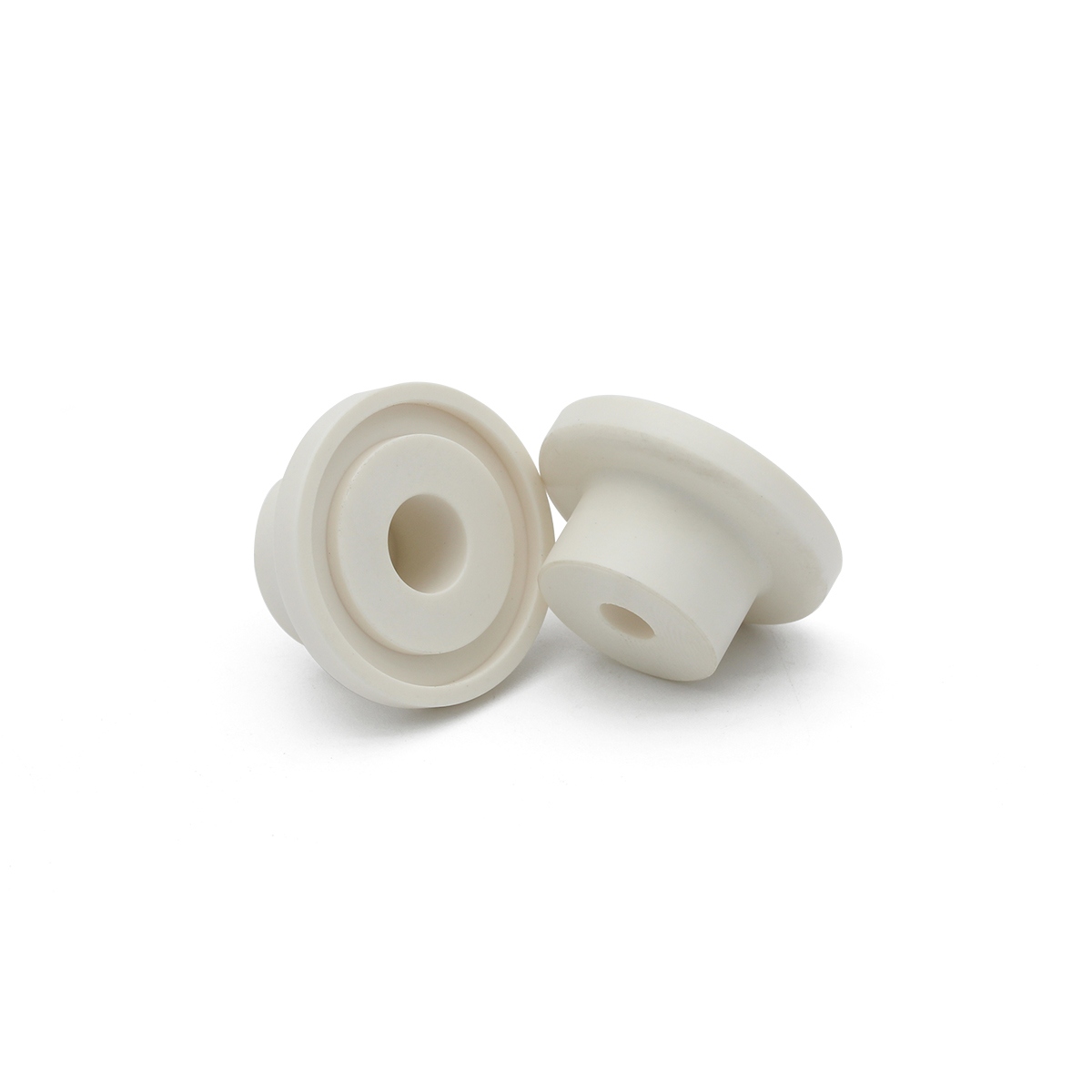Introduction to POM
Polyoxymethylene (POM), commonly known as acetal or Delrin (a trademarked name by DuPont), is a high-performance engineering thermoplastic widely used in CNC Machining due to its exceptional mechanical properties, dimensional stability, and chemical resistance. POM is available in two primary forms: homopolymer (Delrin) and copolymer (Acetal), each with slightly different characteristics tailored for specific applications.

Key Characteristics of POM for CNC Machining
Mechanical Properties
Tensile Strength: 60-70 MPa (homopolymer), 50-60 MPa (copolymer)
Flexural Modulus: 2,800-3,200 MPa
Impact Strength (Izod): 80-100 J/m (notched)
Hardness (Rockwell M): 80-94
Thermal Properties
Melting Point: 165-175°C (homopolymer), 160-170°C (copolymer)
Continuous Service Temperature: -40°C to +100°C
Coefficient of Thermal Expansion: 8-12 × 10-5/°C
Other Properties
Density: 1.41-1.42 g/cm3
Water Absorption (24h): 0.2-0.3%
Friction Coefficient: 0.1-0.3 (dynamic, against steel)
CNC Machining Considerations for POM
POM is considered one of the most machinable thermoplastics, with excellent dimensional stability during and after machining. Key machining parameters include:
Cutting Speed: 200-300 m/min for milling, 100-150 m/min for turning
Feed Rate: 0.05-0.15 mm/tooth
Depth of Cut: Up to 5 mm for roughing, 0.5-1 mm for finishing
Tool Geometry: Positive rake angles (10-15°) with sharp cutting edges
Coolant: Generally not required, but compressed air is recommended to prevent chip buildup
Applications of CNC Machined POM Components
Industrial Applications
Gears and Bearings: POM's low friction and wear resistance make it ideal for precision gears with tooth module as small as 0.5 mm and bearings operating at PV limits up to 3 MPa·m/s.
Valve Components: Used in fluid handling systems with pressure ratings up to 20 bar and temperatures to 80°C.
Electrical Insulators: With dielectric strength of 20 kV/mm and volume resistivity >1015 Ω·cm.
Consumer Products
Fasteners and Clips: Precision-machined POM parts can withstand repeated flex cycles >106 without failure.
Food Handling Equipment: Compliant with FDA 21 CFR 177.2470 and EU 10/2011 regulations for food contact.
Medical Devices: Used in surgical instruments and drug delivery systems with autoclavability up to 121°C.
Automotive Components
Fuel System Parts: Resistant to hydrocarbons and alcohols with permeation rates <0.5 g·mm/m2·day.
Seat Mechanisms: Can operate at -40°C to 85°C with consistent performance.
Sensor Housings: Provides EMI shielding effectiveness of 20-30 dB in certain formulations.
Maintenance and Care of CNC Machined POM Parts
Cleaning Procedures
Use mild detergents with pH between 5 and 9 at temperatures below 60°C.
Avoid chlorinated solvents which can cause stress cracking at concentrations >5%.
For sterilization, use steam at 121°C for 20 minutes or gamma radiation at doses <50 kGy.
Storage Conditions
Store in 20-25°C with relative humidity 30-50%.
Protect from UV exposure which can cause surface degradation at >300 kJ/m2.
Stack machined parts with minimum 10 mm spacing to prevent deformation.
Lubrication Requirements
For moving parts, use PTFE-based lubricants with viscosity 50-100 cSt.
In food applications, only NSF H1-registered lubricants should be used.
Re-lubrication intervals typically every 6-12 months depending on load.
Inspection and Replacement
Check for wear using profile projectors with 5 μm accuracy.
Replace gears when tooth wear exceeds 0.1 mm or backlash increases by >15%.
Monitor bearing surfaces for Ra roughness >0.8 μm as an indicator of wear.





 English
English

